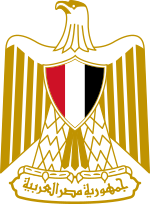Ministry of Awqaf

|
|
| Agency overview | |
|---|---|
| Jurisdiction |
|
| Headquarters |
Cairo Coordinates: 30°2′31″N 31°13′57″E / 30.04194°N 31.23250°E |
| Agency executive |
|
| Website | Official website |
The Ministry of Awqaf of Egypt (Arabic: وزارة الأوقاف المصرية) is one of ministries in the Egyptian government and is in charge of religious endowments. Religious endowments, awqaf, are similar to common law trusts where the trustee is the mosque or individual in charge of the waqf and the beneficiary is usually the community as a whole. Examples of waqfs are of a plot of land, a market, a hospital, or any other building that would aid the community.
Before the nationalization of the awqaf, the mosques helped in lending the poorer citizens a voice. For example, Al-Azhar mosque would aid the community through the endowments and remained economically separate via the revenue they earned from the awqaf. This enabled the mosque to maintain a state of independence from the dictates of the government and rulers. Mosques could use the endowments to help the community as needed. Also, because mosques were economically independent, imams could preach what they felt was important, with little to no government intervention. However, when the government effectively took over the endowments program, the people suffered greatly. They no longer had their only means of political representation and Al-Azhar’s religious influence was manipulated into producing propaganda by the state.
The first Egyptian leader to nationalize the awqaf was Muhammad Ali. He began the precedent of bringing the endowments under state control. His successors continued the process and by the time King Fuad I was in power, Al-Azhar carried out the government’s wishes. When the king desired to be caliph some “…Al-Azhar sheikhs were ready to provide the necessary pronouncements” (Ibrahim 636). Endowments were considered a part of the state when Gamal Abdel Nasser nationalized them in 1952. Gamal Abdel Nasser used the newly created propaganda machine of Al-Azhar to “…justify Arab Socialism and his struggle against Israel” (Ibrahim 636). Anwar Sadat continued Nasser’s policies of using Al-Azhar for the “…sake of justifying opposing policies, including his treaty with Israel” (Ibrahim 637).
This process arguably twisted what was once a community-benefitting mosque, into a corrupt political machine; and with the Ministry of Awqaf promoting rationalism rather than supporting the cause of the poor. In 1977 Jamaat al Muslimin, a guerrilla Islamic group that rose out of the Muslim Brotherhood, killed the Minister of Awqaf, Muhammad al-Dhahabi, after the arrest of its members. The Ministry of Awqaf and the mosques, was in the eyes of much of the public a tool of the state, and because the mosques were now under the state’s economic control, the imams were effectively employees of the state. The government, for the first time, now had the authority to dictate to the imams and the mosque what could or could not be preached.
...
Wikipedia
